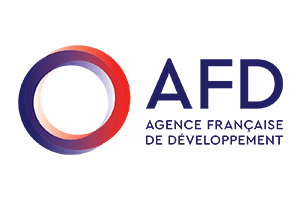March 14, 2017
How gender inequalities fuel rape in war
Inequalities between men and women in a society increase the likelihood of rape in war. In order to reduce the incidence of sexual violence in conflicts, gender norms and the way in which men and women are seen in times of peace should be addressed.
By Natalie Browes, volunteer of the Mukwege Foundation
The use of rape and other forms of sexual violence has been an enduring feature of armed conflict around the world. Yet despite its prevalence, experts and policy makers are still grappling to fully comprehend sexual violence in conflict situations. Current debate generally understands these crimes in two distinct ways.
Firstly, sexual violence is seen as opportunistic actions of an individual soldier or a small group operating in a military environment where violence, trauma and hyper-masculinity have become the norm.
Sexual violence is effective in societies with deeply-entrenched gender norms
Secondly, sexual violence in armed conflict is a military tactic, whereby rape is deliberately used to displace or punish the civilian population. This weapon of war has devastating consequences that may reach far beyond the individual victims. For example, in some conflicts such as the Rwandan genocide of 1994, rape was used to change the genetic make-up of the ‘enemy’ population.
Both cases must be situated within the norms and values that shape societies. In many communities, worldwide beliefs surrounding the roles that men and women occupy in society are binary, unequal and deeply-entrenched. Therefore, sexual violence is particularly prevalent and effective.
Shaming and degrading victims through rape
The rape of women in highly patriarchal societies is a brutal way of exercising dominance over them, reaffirming their position as subordinate. When a woman’s role is constructed as one of loyalty, purity and humility, a victim of rape may be seen as ‘spoiled’or ‘impure’ – bringing deep feelings of shame both to the victim and to those around her. She may be ostracised by her husband, her family, and even forced out of her community. If the rape is particularly violent and leaves a woman unable to bear children, her role and value is further undermined. Moreover, given a man’s role as protector, the rape of his wife can greatly damage his perceived masculinity, also resulting in shame.
The rape of men in strongly patriarchal societies serves to demasculate, feminise, and shame victims. Beyond the violence and trauma of the act itself, this may result in severe emotional and psychological damage. For these reasons, male rape victims can become increasingly violent towards those around them as way to reassert their masculinity.
Because of this shame and stigmatisation associated with rape, many victims do not report their ordeals, even to close family members. In some cases – due to extreme gender inequalities – it may even be highly dangerous to do so. In Sudan for example, rape is defined as non-consensual sex between a man and a woman outside of marriage. If a woman cannot prove lack of consent therefore (which requires three male witnesses or six female witnesses), she risks being charged with adultery.
Societal norms in peace influence occurrence of rape in war
To understand the full effect of rape in conflict situations, we must first understand the societal norms and practices that exist outside of war. The unequal and polarising notions of ‘male’ and ‘female’ increase the likelihood of sexual violence in times of war as well as in times of peace.
For example, soldiers may feel great pressure to rape due to the hyper-masculine environment of war. Perpetrators seek to prove their masculinity and reinforce male dominance and, as a consequence, normalise the act of rape. Once the conflict has ended, the perpetrator is increasingly likely to engage in risky sexual behaviour to maintain his status as a dominant male.
Need to understand intertwined relationship between gender norms and sexual violence
If these crimes go unpunished, this reinforces gender norms even further and sexual violence continues to be committed in high numbers after the conflict. For example, the International Men and Gender Equality Survey (IMAGES) found that sexual violence in North Kivu (DRC) was just as prevalent a crime in civilian communities as it was among combatants. Over one third of men surveyed said they had carried out some form of sexual violence. Furthermore, over three quarters held ‘deeply alarming attitudes’ about rape and women’s rights.
Understanding this intertwined relationship between gender norms and sexual violence in armed conflict is essential. It calls for renewed education and awareness-raising efforts which should encourage communities to take a critical look at the (often unrecognised) norms and values that have such a significant effect on behaviour and practices. There is hope that by reducing gender inequalities, the incidence of sexual violence (both in times of war and in peace) will decrease.
Photo: © UN Photo / Sylvain Liechti
Natalie Browes is currently a PhD student at the Autonomous University of Barcelona. She has worked in several sub-Saharan African countries, with a particular focus on gender-based projects. She has also conducted research into sexuality education, and how this affects and is affected by gender norms. Her findings were published in the journal Sex Education.
















